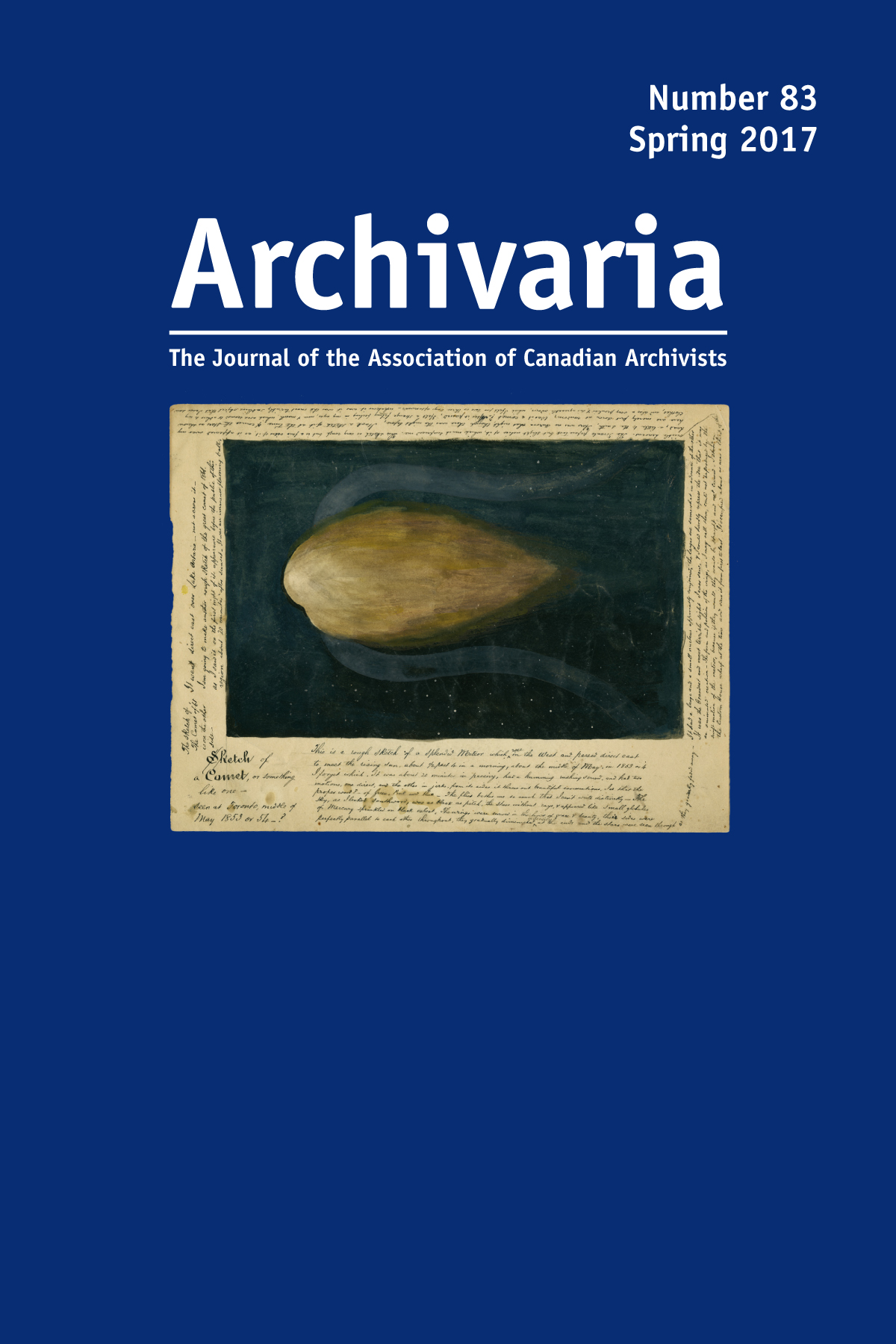Historical Sedimentation of Archival Materials: Reinterpreting a Foundational Concept in the Italian Archival Tradition
Abstract
The concept of sedimentation is an integral part of the Italian tradition of archival studies. Sedimentation has always happened, oftentimes unconsciously, in archival practice, and has had profound effects on the preservation of documents and their transmission over time. This essay aims to explore how sedimentation takes place in the archives. After describing the meanings and uses of the notion of sedimentation in the history of archival theory, the essay focuses on the history of sedimentation, that is, the ways in which sedimentation took place in different time periods in Italy and elsewhere in Europe.
One of the insights offered by this study is that sedimentation has never occurred involuntarily or by chance; rather, it has always reflected, albeit indirectly, the political and administrative needs of the age in which it was executed and has anticipated any future uses of the sedimented materials. Archival sedimentation is “historical” exactly because it takes place within the history of the society in which each archives is produced and maintained. On the one hand, sedimentation is part of the micro-history of that society because it depends on the actions of few individuals, and on the other hand, it is involved in the cultural and juridical macro-history of its time.
The essay concludes with the suggestion that the history of archival sedimentation should be seen as a constitutive part of the knowledge of any given time period. Sedimentation is an integral part of our historical collective memory.
With translation by GABRIELLA SONNEWALD and introduction by FIORELLA FOSCARINI
RÉSUMÉ
Le concept de la sédimentation est une partie intégrale de la tradition italienne des études en archivistique. La sédimentation s’est toujours produite, souvent de façon inconsciente, dans la pratique archivistique et a eu des effets profonds sur la préservation de documents et sur leur transmission au fil du temps. Cet article vise à explorer comment s’effectue la sédimentation dans les archives. Après avoir décrit les significations et l’utilisation du concept de la sédimentation dans l’histoire de la théorie archivistique, cet article se concentre sur l’histoire de la sédimentation, c’est-à-dire les façons dont la sédimentation s’est manifestée à différentes époques en Italie et ailleurs en Europe.
Une des idées offertes par cette étude est que la sédimentation ne s’est jamais produite de façon involontaire ou par hasard; elle a toujours été le reflet, quoique indirectement, des besoins politiques et administratifs de l’époque à laquelle elle a été effectuée et elle a anticipé toute utilisation future des matériaux sédimentés. La sédimentation archivistique est « historique » précisément parce qu’elle a lieu à l’intérieur de l’histoire d’une société dans laquelle chaque dépôt d’archives est produit et maintenu. D’une part, la sédimentation fait partie de la micro-histoire de cette société parce qu’elle dépend des actions de quelques individus, et d’autre part, elle fait partie de la macro-histoire culturelle et juridique de son époque.
Cet article se termine en suggérant que l’histoire de la sédimentation archivistique devrait être perçue comme une partie constituante du savoir à toute période de temps donnée. La sédimentation est une partie intégrale de notre mémoire historique collective.
Authors of manuscripts accepted for publication retain copyright in their work. They are required to sign the Agreement on Authors' Rights and Responsibilities that permits Archivaria to publish and disseminate the work in print and electronically. In the same agreement, authors are required to confirm that "the material submitted for publication in Archivaria, both in its paper and electronic versions, including reproductions of other works (e.g. photographs, maps, etc.) does not infringe upon any existing copyright." Authors of manuscripts accepted for publication retain copyright in their work and are able to publish their articles in institutional repositories or elsewhere as long as the piece is posted after its original appearance on archivaria.ca. Any reproduction within one year following the date of this agreement requires the permission of the General Editor.





